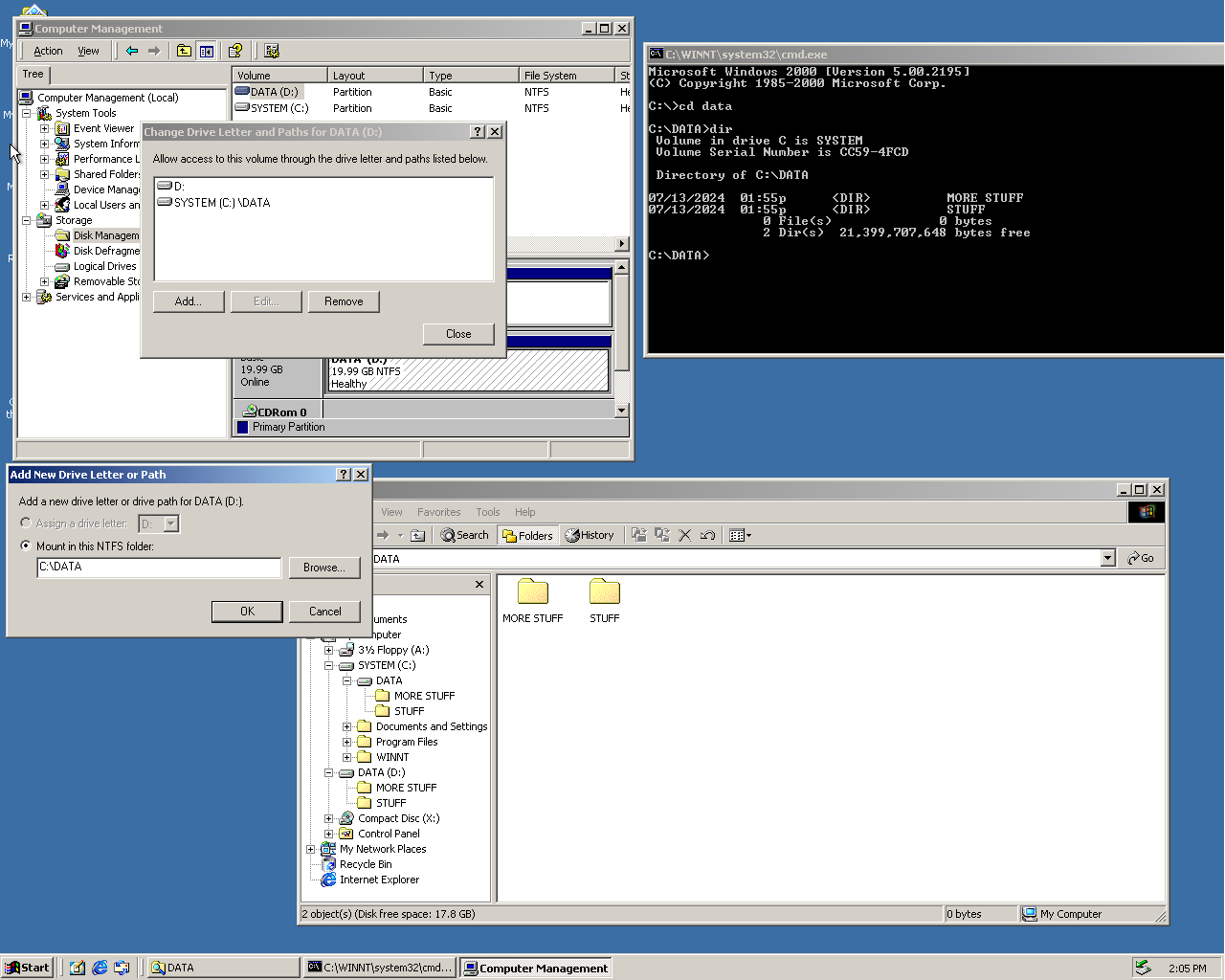SpaceCadet
Yup, but that's already mentioned in the article. Thought I'd give people the exact userpref, so they can modify their custom user.js if they have one.
To disable:
user_pref("dom.private-attribution.submission.enabled", false);
I just booted up a Windows 2000 VM to check ... it's there in the disk management tool. It looks a bit weird with the drive icon in Explorer, but ok.

Yeah, I believe that was introduced as far back as Windows 2000. It never really caught on though.
Well keep dreaming then. If that is what keeping you on Windows, you will never leave Windows. Nobody in their right mind is ever going to create a new OS with drive letters.
/thread
The thing is, you are absolutely free to use a /c,/d,/e mounting scheme, but you are not shackled to it like you are in Windows. Personally I like to organize my data in one big root (/) file system on my NVME drive and then /data for my bulk storage on HDD and /nas for my NAS shares. I never have any problems knowing where my data is.
BTW, I notice all your complaints revolve around "OMG it's different" and "OMG the user can choose to do things differently... so complicated". That is kind of the point of Linux you know?
At some point you just have to accept that it's different and move on, or decide that it's too complicated for you and use something else.
BTW, I wonder why people never make this complaint about Apple devices? It also has a hierarchical file structure without drive letters, after all it is also a Unix variant.
I know the filesystem is simple to Linux users, but the semantic form of physical drives getting a letter always made more sense to me.
That's one of the things that semi-experienced Windows users need to wrap their head around, but I strongly disagree that drive letters are somehow inferior to a hierarchical file system structure. I mean, the A:, B:, C: ... convention was originally just intended for the first IBM PC with 1 or 2 floppy drives. It was never intended to support complex storage configurations, whereas the hierarchical file system was designed for Unix systems that had to handle multiple magnetic drives from the start. It is a much more flexible system to organize your file storage.
On Linux, as best I understand it, if I have three drives, two of them are at /dev/hdd0 and hdd1. But they’re not actually there.
That's because there is a difference between a block device and a mounted file system. Windows just obscures that difference from you with its archaic drive mapping system.
All your block devices and partitions on your block devices will be in /dev with a meaningful name. You can list them with the lsblk command. If a partition contains a file system that Linux knows how to use, you can mount it anywhere you like.
they’re accessed at /media/hdd0 after mounting them
No that's not "convention" at all. Some desktop environments may decide to mount undefined drives there, but there really is no convention, ultimately you mount it where you want it to be mounted.
If you place an item in /home/documents/notporn, then who knows which drive it’s on because you don’t know what symlinks someone set up to make that folder.
If your unsure, df /home/documents/notporn should tell you exactly what drive it's on, but ultimately it's up to you to know how you've organized your storage.
BTW I've said this before, but Linux is probably harder for users who know Windows just well enough to be dangerous than it is for relative beginners, because there are so many concepts and things they take for granted that they have to unlearn.
So they put in a Gotek drive like I did with my retro PC?
It's from a Devo song called Mongoloid.
It goes:
Mongoloid, he was a mongoloid
Happier than you and me
Asian is called mongoloid.
One archeologist to another: looks like this person was ... happier than you and me.
( •_•)>⌐■-■
(⌐■_■)
Installing Linux has never been particularly difficult, not in the last 15 or even 20 years anyway. I've always found it easier and more straightforward than the contemporary Windows installation process.
The challenging part is wrapping your head around the Linux/Unix way of doing things when things can't be done through the GUI with just a few clicks.